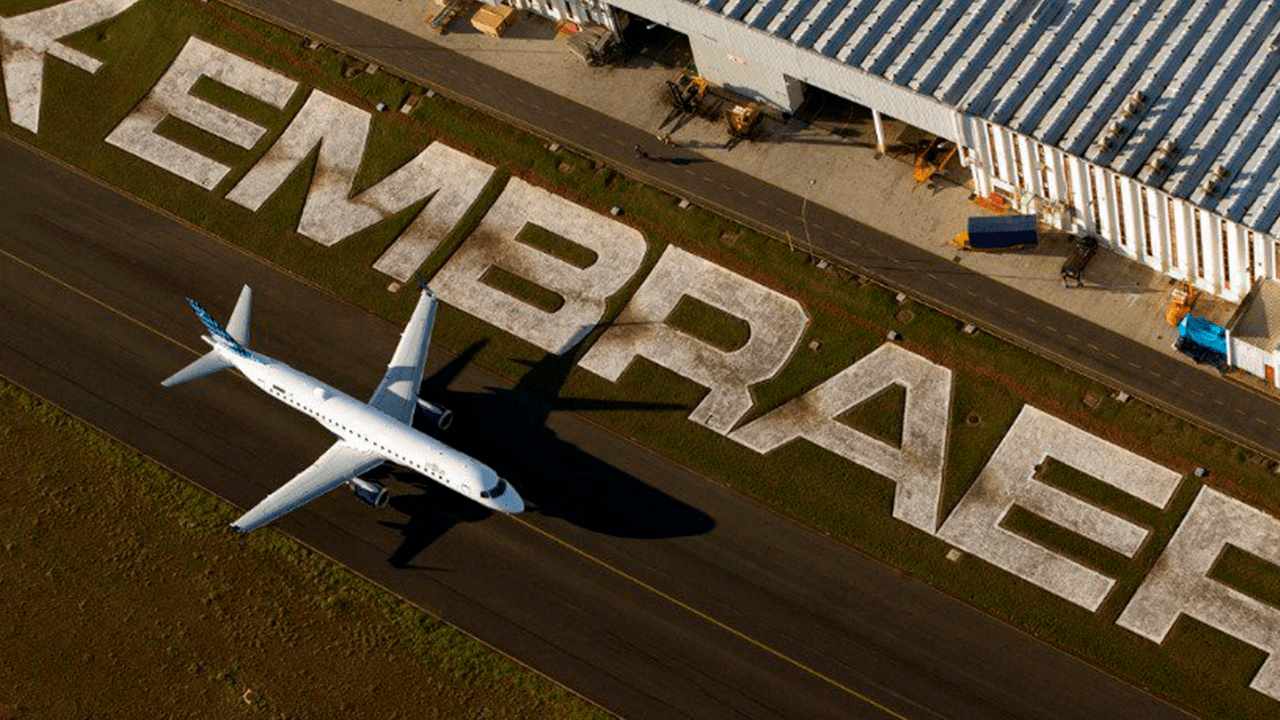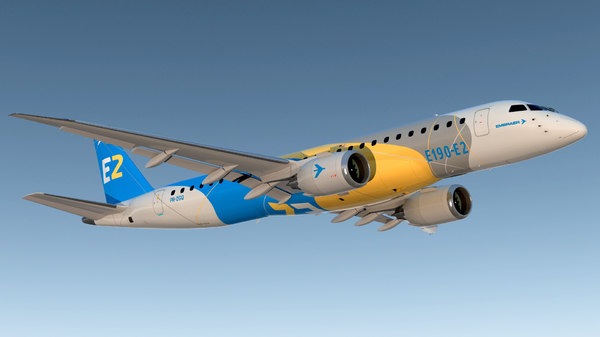RIO DE JANEIRO, BRAZIL – Not everything surrounding Covid-19 is negative for aviation manufacturer EMBRAER (EMBR3). The company, which is racing against time to adjust its operations after the failed deal with Boeing, found a window of opportunity in the pandemic.

The assessment of the company’s executives, in line with expert analysis, is that the pandemic has reinforced the space for smaller aircraft in the market, a segment in which the Brazilian company is strongly present globally.
According to EMBRAER’s Sales Engineering Director of the executive jet division, Ricardo Carvalhal, some customers are even considering asking the company to advance deliveries.
“Our customers remain committed. Some are consulting us to receive their aircraft ahead of schedule. We have not had cancellations in the executive jet sector, only some deferrals,” Carvalhal pointed out. EMBRAER executives attended a panel on the Brazilian company at the Farnborough Aeronautical Show on Tuesday. Traditional in the UK industry, the event is being held online due to Covid-19.
With demand for international flights close to only two percent of what it was before the pandemic, manufacturers such as Boeing and Airbus are experiencing a severe crisis. However, EMBRAER has succeeded in finding a market niche, according to the head of marketing and strategy of the company’s commercial division, Rodrigo Silva e Souza.
In the presentation, Silva e Souza pointed out that smaller jets proved more resilient in the United States during the crisis. “This also occurred after the financial crisis. We find that the smaller aircraft segment is more widely used and has a more consistent rebound,” he said.
The recovery of the airline industry after the pandemic began to occur in regional transport, particularly in Europe and China, with the declining curve of new coronavirus cases. Silva e Souza argued that the regionalization of airline transport will be a major trend in the coming years. “A better connected domestic market tends to emerge after the crisis. We see a drop in airlines’ growth levels. With the industry becoming smaller, companies will have to strive to gain market share and become more efficient,” he said.
Souza provided its E-Jets model numbers for some companies during the crisis. KLM, for instance, was using 80 percent of its E-Jets in late April 2020 against 14 percent of the Boeing 737-NG. In June, the EMBRAER model’s usage rate was 98 percent against 29 percent for the 737. For Japan Airlines, the scenario is similar, with E-Jets’ use at 97 percent in April and 71 percent of the 737-NG, rising to 100 percent and 81 percent, respectively, in June.
“The impact on the E-Jet is much smaller. These numbers suggest that smaller aircraft will be considered key to any crisis that reaches the sector. We know our sector is cyclical and we will soon see other crises. We hope they are not as severe,” he said.

However, optimism does not remove the warning signal. EMBRAER closed the second quarter with the delivery of 17 jets, four of them commercial and 13 executive (nine light and four large). The backlog at the end of June totaled US$15.4 billion (R$77 billion). On Monday, the company placed the lowest delivery of commercial aircraft and executive jets in the second quarter in the pandemic. In the same period last year, the company announced 51 jets and a backlog of US$16.9 billion.
According to data from the International Air Transport Agency (IATA), the crisis is still acute. The sector’s demand (measured in revenue per passenger/km, or RPK) fell 91.3 percent in May compared to the same period last year. However, in April the decline was even greater, by 94 percent in the annual comparison.
Segregating only the domestic market, demand fell 79.2 percent in May in the annual comparison. In April, the annual decline amounted to 86.2 percent. The number highlights the rebound trend in the sector through the domestic market.
With international demand on the ground, the giants had to move. Also at the event, Airbus president Guillaume Faury drew a difficult scenario for defining investments. On the one hand, according to the executive, there is a sign of the need for smaller contributions because of the severe impact of Covid-19 on commercial aviation. On the other hand, the segment has been under great pressure to pollute less, something that demands a robust technology contribution to achieve the goal of zero carbon emissions by 2050.
According to the executive, Airbus can not simply wait for the scenario to improve. “We have to make the right decisions. To adapt the company to this new scenario,” he said. According to Guillaume Faury, the company will have to cushion the impact of the pandemic in the short term to reach a point of stability again. However, the task will not be easy, and Faury said that the group may even need to regress by a decade in terms of size to overcome the crisis.
In another panel, Boeing vice-president Mike Delaney came out in support of the airline industry and called for more attention from governments around the world. “Lawmakers need to understand that planes don’t spread diseases,” he said, mentioning safety tools in aircraft that make them a safe means of transport during the pandemic. The statement comes in the wake of severe air traffic restrictions in several countries.
The schedule for the Farnborough Air Show runs through July 23rd. One of the lectures in the event’s schedule is by the new president of Embraer’s commercial division, Arjan Meijer, who took office in June. The market is waiting for clues on what the future of the airline’s commercial sector will be like after the failed deal between the Brazilian company and Boeing.
Source: Estadão Conteúdo

